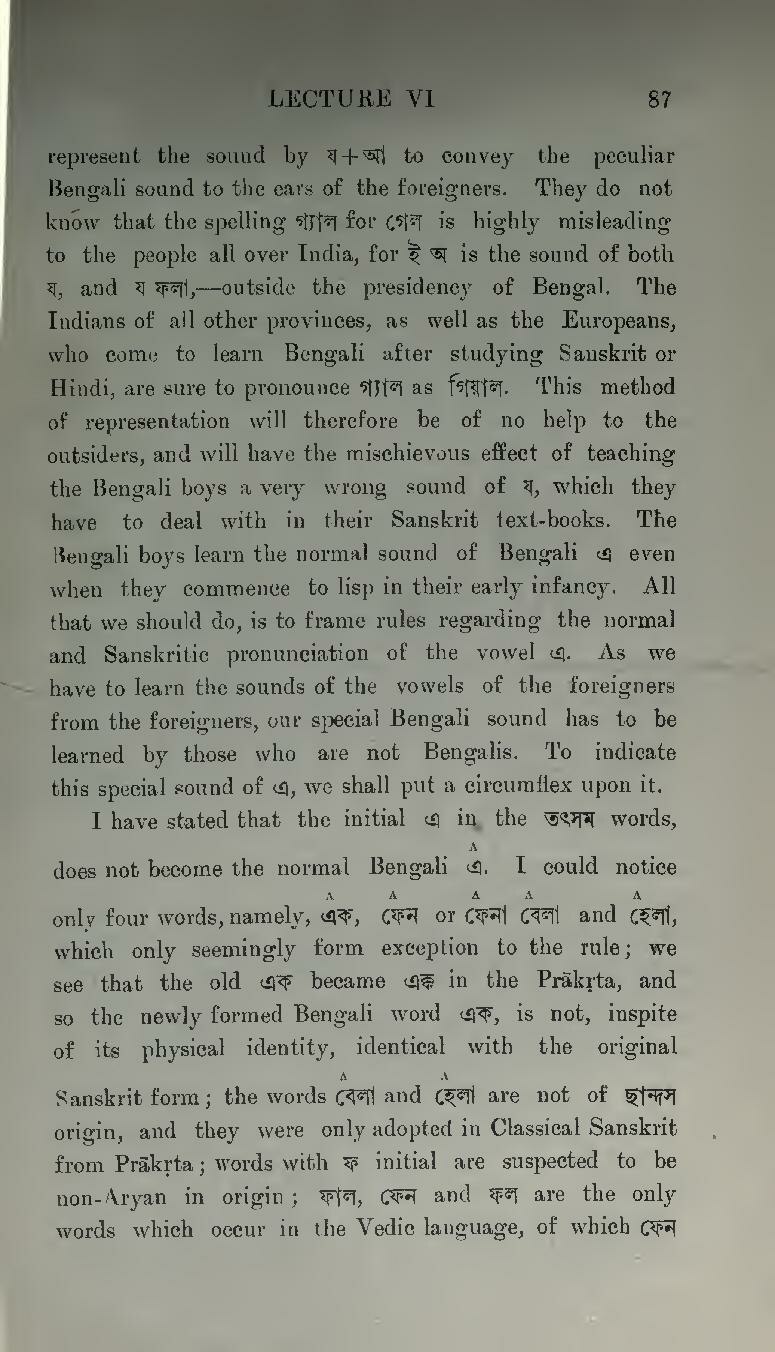represent the sound by য + আ to convey the peculiar Bengali sound to the ears of the foreigners. They do not know that the spelling গ্যাল for গেল is highly misleading to the people all over India, for ই অ is the sound of both য, and য ফলা—outside the presidency of Bengal. The Indians of all other provinces, as well as the Europeans, who come to learn Bengali after studying Sanskrit or Hindi, are sure to pronounce গ্যাল as গিয়াল. This method of representation will therefore be of no help to the outsiders, and will have the mischievous effect of teaching the Bengali boys a very wrong sound of য, which they have to deal with in their Sanskrit text-books. The Bengali boys learn the normal sound of Bengali এ even when they commence to lisp in their early infancy. All that we should do, is to frame rules regarding the normal and Sanskritic pronunciation of the vowel এ. As we have to learn the sounds of the vowels of the foreigners from the foreigners, our special Bengali sound has to be learned by those who are not Bengalis. To indicate this special sound of এ, we shall put a circumflex upon it.
I have stated that the initial এ in the তৎসম words, does not become the normal Bengali এ̂. I could notice only four words, namely, এ̂ক, ফে̂ন or ফে̂না বে̂লা and হে̂লা, which only seemingly form exception to the rule; we see that the old এক became এক্ক in the Prākṛta, and so the newly formed Bengali word এক, is not, inspite of its physical identity, identical with the original Sanskrit form; the words বে̂লা and হে̂লা are not of ছান্দস origin, and they were only adopted in Classical Sanskrit from Prākṛta; words with ফ initial are suspected to be non-Aryan in origin; ফাল, ফেন and ফল are the only words which occur in the Vedic language, of which ফেন
